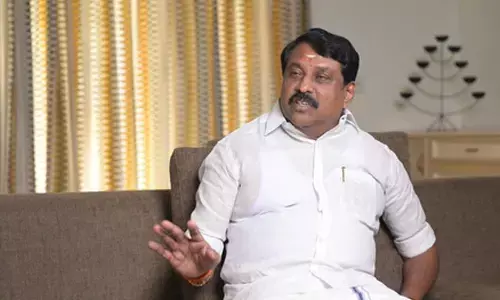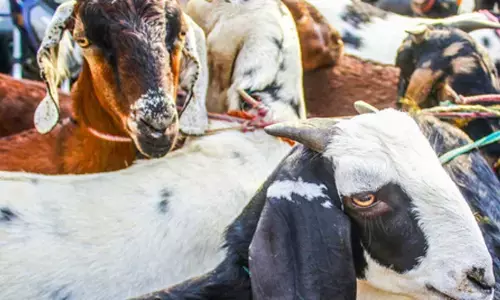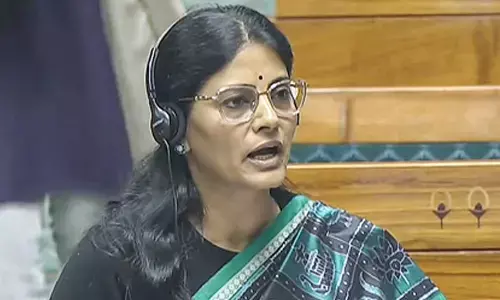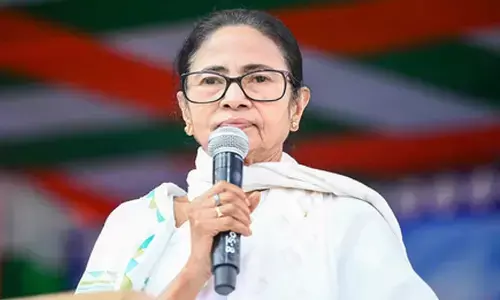Yet another call for unity of opposition

Yet another call for unity of opposition
No doubt, there is a need for a change but there seems to be no promising leader in the other parties, excluding BJP and Congress, to emerge as a national face. But the mettle shown by Mamata and Kejriwal is something to reckon with. The regional parties should also keep in mind the need for a viable coalition
Every other day, the opposition is thinking of ways to take on BJP and raking up some or other issue. Alas, several rounds of talks yielded very little so far. This time around also, Trinamool Congress chairperson and West Bengal Chief Minister Mamata Banerjee has pitched for united opposition to confront the BJP. She called upon like-minded parties to form united opposition.
On March 30, Mamata called for a meeting of all non-BJP chief ministers and political parties, alleging that the BJP was using central agencies, including CBI and ED, to "target, harass and corner political opponents across the country." This is not the first time that such a call for united opposition is made. It happens now and then. However, desired results are not yielded. Why? This scenario calls for discussion of what the parties are lacking in — ideology, will power or actions.
Since 2016, there have been attempts to form a united opposition by different regional parties. Yet, whenever elections were held, these opposition parties ended up fighting one another, rather than putting up a united fight against the BJP.
Delhi CM Arvind Kejriwal, Telangana CM K Chandrashekar Rao, former AP CM N Chandrababu Naidu and Mamata Banerjee are all popular and have time and again pitched for a united opposition. In the past, these regional parties were looking for forging anti-BJP and anti-Congress platform. But now, the regional parties want to float a front that can effectively prevent the BJP from retaining power at the Centre in 2024 again.
The parties need to learn from the state coalition experiences. The internal bickering within the parties is another hurdle which has to be sorted out first. The leadership crisis is yet another issue that shakes the loyalty of the people and so the leaders must be committed to their parent party throughout.
Kejriwal or Didi: Who can do it better?
If Mamata is experienced and senior, Kejriwal is junior and young. Against Mamata's 'hard secularism or pro-minority-ism,' Kejriwal is comfortable mimicking the 'soft-secularism plus sleeve-nationalism' pitch, a bit like the BJP. Arguably, Kejriwal's political plank is an active work in progress that is gaining strength with each passing day. Mamata is a battle-scarred veteran with relationships across the spectrum, especially among India's 'swivel politicians', i.e. those regional titans who can run with the hare (BJP) and also hunt with the hound (opposition).
It is advantage for AAP as the countrymen can connect with their fellow Indian without looking at regional faces. Being the CM of national capital territory Delhi, Kejriwal enjoys more attention and connection. But, focused on ousting both Congress and BJP, Mamata can sway almost all the national heavyweight leaders while this privilege is not enjoyed by Kejriwal. Realising the role he can play in national politics, Kejriwal should shift his focus to wooing the citizens of India and not just voters in one state.
For the past decade or so, no State or union territory in India has been headed by a woman except West Bengal. Mamata's concrete steps for women's rights over the years have created strong support base among female voters in the State.
If at all any party has a potential to take on the BJP, then it has to come under the umbrella of a Congress-led coalition. For this to happen, Congress has to first select its national leader--an alternative face to Sonia Gandhi or Rahul Gandhi. Thereafter, it can work on persuading people of how it canbe best option foradministering the country6 again. The united opposition means united ideology and agenda and not just various parties coming together.
With just two years to go for the next Lok Sabha polls in 2024, there is very less time and the parties should start working together right now. Unlike the previous times, instead of having series of meetings to decide the state level strategies, the parties should get into action to campaign under one banner. Congress and regional parties faced debacles in Lok Sabha elections and assembly polls in different States due to lack of opposition unity against BJP and multi-cornered contests.
How is BJP winning?
In the Indian voting system that allows past-the-post rule, the votes which get divided among numerous regional parties and Congress help the BJP in accumulating more votes. Since Independence, the country has only seen bipolar parties at the Centre with some exceptions. No doubt, there is a need for a change but there seems to be no promising leader in the other parties, excluding BJP and Congress, to emerge as a national face. But the mettle shown by Mamata and Kejriwal is something to reckon with. The regional parties should also keep in mind the need for a viable coalition.
The pulse of the people and their voting behaviour should also be constantly monitored. The opposition should look at BJP as one strong party which, despite facing anti-incumbency, retains power in State after State, apart from the Centre. There are chances of a united opposition gaining a majority in the next Lok Sabha polls in 2024 if everything goes well planned in the opposition camp from now onwards.
















